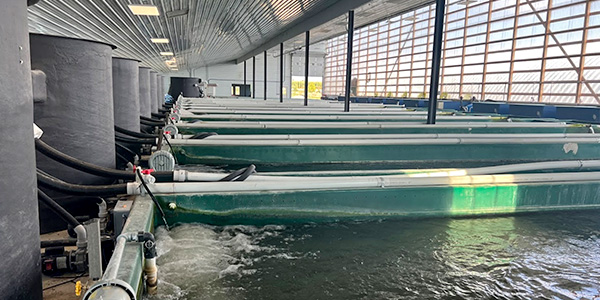Water Quality
Water quality is important in raising healthy fish.
Many articles have been written on this subject, yet people continue to ask basic questions about water quality.
This article will attempt to address water quality as a series of factors that can be understood when raising healthy fish.
Many people believe that you have to change your basic pond or aquarium chemistry after reading an article on water quality. Rather than attempting to change water chemistry, hobbyists should seek to maintain constant water chemistry over extended periods of time. Unless your water conditions are extreme, most fish can and will adapt to water parameters, if kept relatively constant over time. So what are the water quality parameters that we should measure?
As a minimum, you should monitor the amounts of ammonia and nitrites in your system. You should also regularly monitor the pH and temperature of your pond or aquarium.
Let’s understand how each of these elements contributes to the overall water quality of your aquatic environment.
Ammonia and nitrites are a by-product of fish respiration and metabolism. Together with nitrates, they form a process in the pond or aquarium, which is known as the nitrogen cycle, or nitrification. When fish respire through their gills, or eliminate waste products, they release ammonia into the water.
A series of bacteria break this ammonia (which is toxic to fish) into nitrites, which is less toxic to fish, and then another complex of bacteria breaks down nitrites into nitrates, which are once again, less harmful. In a natural environment, such as a lake or pond, this cycle happens without human intervention.
The nitrification cycle proceeds as it always has, with the end product of the system, nitrates, acting as a source of energy for plants. In addition, relatively low fish-stocking levels in a lake or pond make the nitrification cycle more efficient; the end result of this natural process is known as a “balanced system.”
In artificial environments, such as aquariums and ponds, the nitrogen cycle is equally important. A nitrogen cycle will begin in an artificial environment after a period of six to eight weeks, which is the time required for the bacteria needed to establish the cycle, to become established.
There is one caveat however; the cycle requires ammonia to get started. So, we need to add fish to the equation, to get the cycle going. But, if we add too many fish all at once, the nitrogen cycle can’t get established quickly enough, and we experience fish kills.
This seems like a Catch-22 until we realize that we should introduce fish slowly, maybe one or two at a time, until the cycle begins.
During this introductory period, it is important to do frequent water changes (every 2 – 3 days), to eliminate any build-up of ammonia in the water. Alternatively, you could add ammonia-neutralizing products, such as KoiRx De-Tox Plus, to convert the toxic ammonia into a non-toxic variant.
Once the nitrification process is established, it continues to work until it is disrupted; disruption can be caused by some fish medications, a drastic change in pH (known as a pH crash), and also by lower water temperatures (the cycle doesn’t stop with lower temperatures, it just becomes less efficient.)

